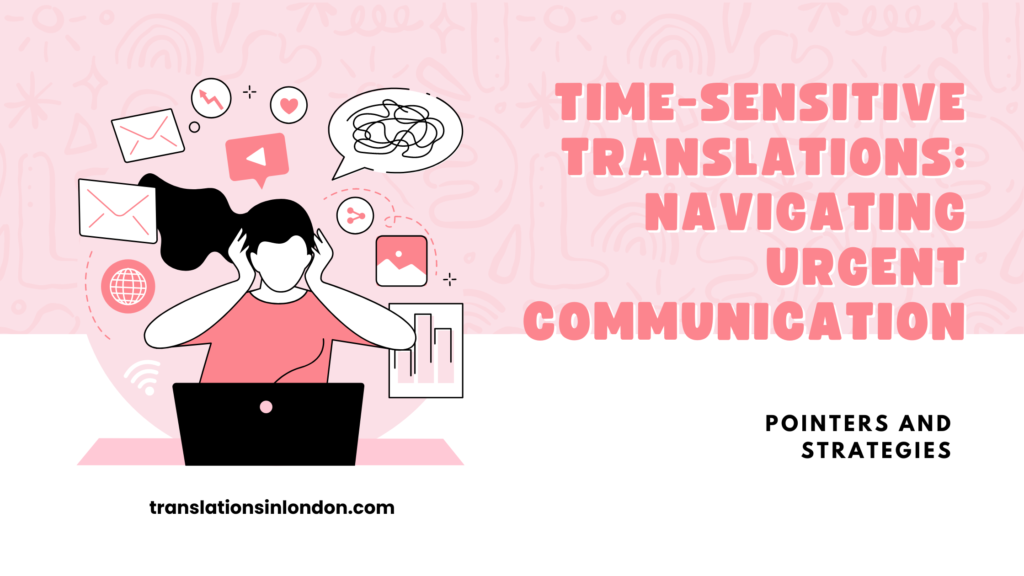
In an ideal world, deadlines are not tight, and there’s always ample time to ensure every detail of a translation is perfect. However, the reality of working with medical translations often involves a high level of urgency. Whether it’s for patient care instructions, clinical trial documents, or emergency communication, the need for speed does not diminish the necessity for accuracy. Here’s how to effectively navigate these high-pressure situations without compromising on quality:
Prioritize Quality
- Accuracy is Critical: In medical translations, even minor errors can have significant consequences for patient safety and treatment outcomes. Therefore, maintaining high standards of accuracy, clarity, and completeness is paramount, regardless of time constraints.
- Specialized Knowledge: Ensure that the translators involved are highly knowledgeable in medical terminology and concepts. This expertise helps in producing accurate translations that are faithful to the original content.
Manage Expectations: Communicate Feasibility
- Realistic Timelines: When faced with seemingly impossible deadlines, it’s essential to have an honest conversation with the client about what can realistically be achieved. Providing a realistic timeline helps avoid compromising on quality due to undue pressure.
- Transparency: Keep the client informed about potential challenges and progress. Transparent communication builds trust and allows for better mutual understanding.
Ask for Prioritization
- Critical Content First: Identify the sections or pages that are most critical and prioritize their translation. This ensures that the most essential information is delivered on time, even if less critical sections are delayed.
- Client Input: Engage with the client to determine the priority areas. This collaboration helps in aligning the translation process with the client’s immediate needs.
Clarify Specific Needs
- Highlight Urgent Sections: Ask the client to mark or highlight the sections that need immediate translation. This focus helps in saving valuable time and resources by addressing the most urgent needs first.
- Scope of Work: Sometimes, not all content needs to be translated immediately. Clarifying the exact requirements can help streamline the process and allocate resources more efficiently.
Team Collaboration
- Collaborative Effort: When the workload is overwhelming, dividing it among multiple translators can speed up the process. Ensure that all translators are briefed on the context and terminology to maintain consistency.
- Dedicated Editor: Use a dedicated editor to review and harmonize the entire document once the initial translation is done. This step is crucial for ensuring consistency and accuracy across the document.
Implementing Strategies
- Break Down the Work: Divide the document into smaller, manageable sections and tackle them methodically. This approach helps in organizing the workload and maintaining focus.
- Utilize Technology: Employ translation software to assist with the process. However, always ensure that the final output is reviewed and edited by a human translator to correct any inaccuracies.
- Review and Proofread: Allocate time for a final review and proofreading session. This step ensures that the translation maintains high quality, despite the time constraints.
Conclusion
Navigating urgent medical translations requires a strategic approach to balance speed and accuracy. By prioritizing quality, managing expectations, asking for prioritization, clarifying specific needs, and fostering team collaboration, you can handle time-sensitive translations effectively. Implementing these strategies will help ensure that urgent translations meet the highest standards of accuracy and reliability, ultimately supporting better patient care and safety.